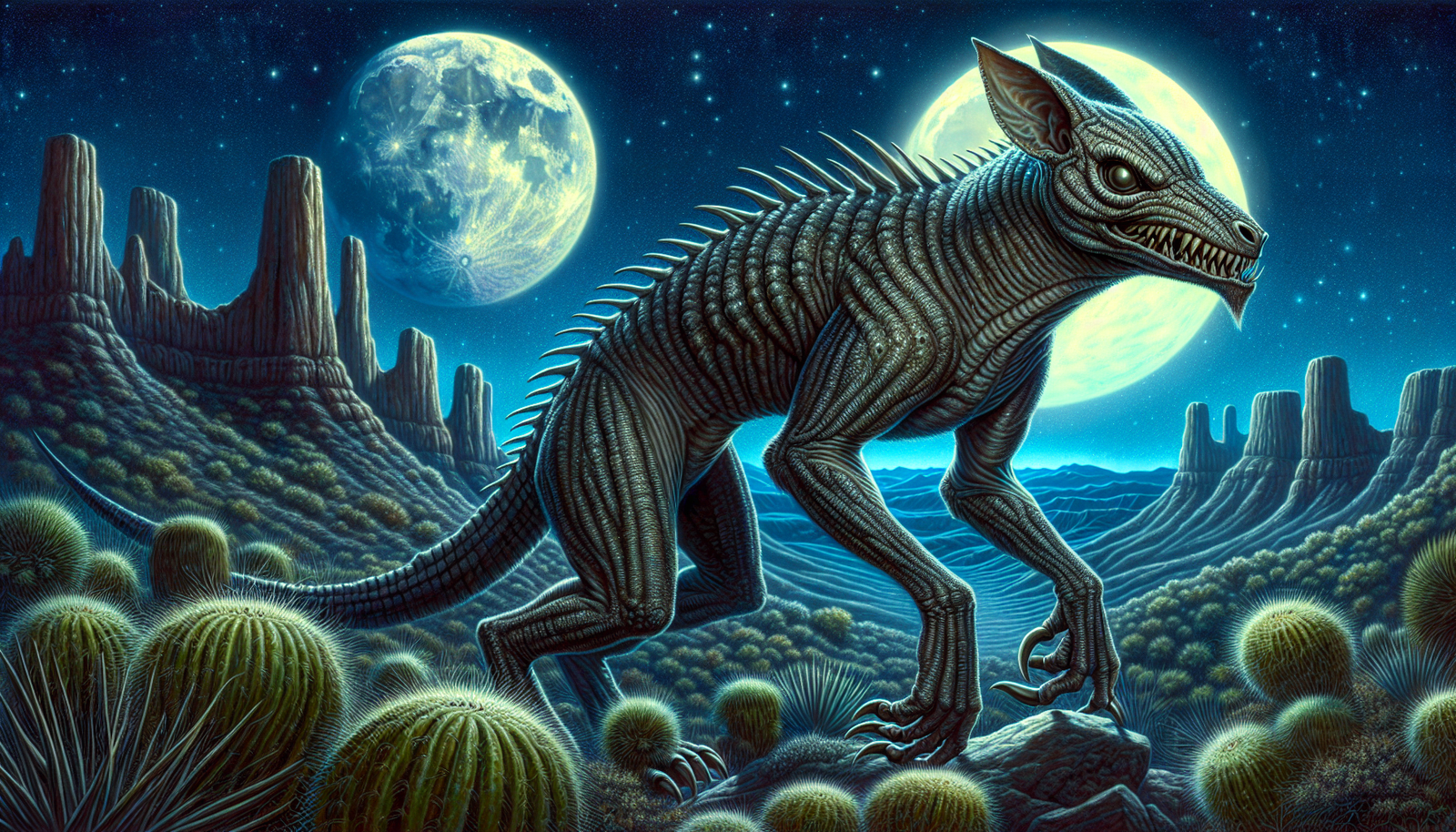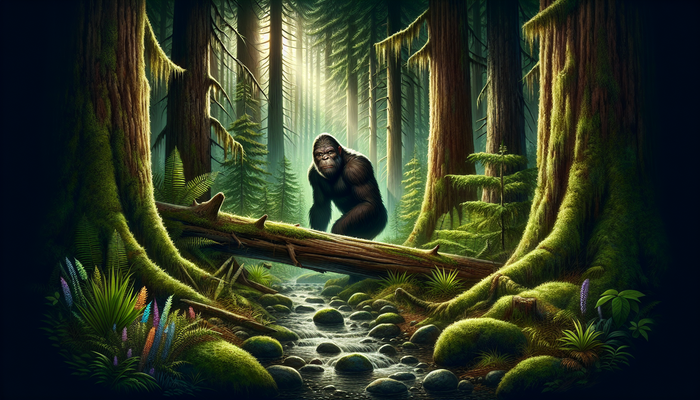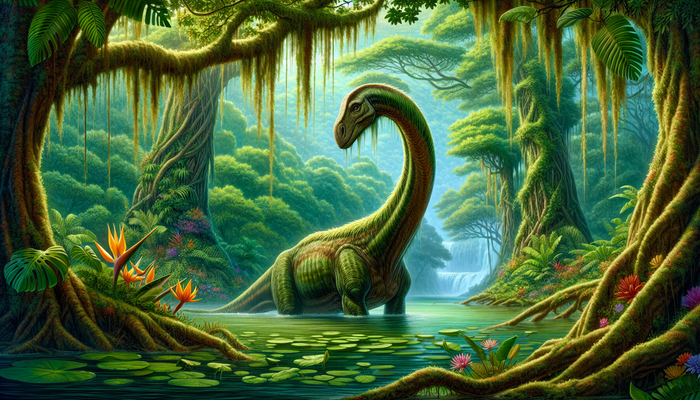New Mexico Cryptids: From Chupacabras to Skinwalkers

By Ava Martinez, Bigfoot Researcher and Teacher
New Mexico: A Land of Enchantment and Mystery
Nestled in the heart of the American Southwest, New Mexico has long been a land of enchantment and mystery. With its vast deserts, rugged mountains, and ancient pueblos, the state seems to whisper secrets of ages past, inviting the curious and the adventurous to uncover its hidden wonders. But amidst the natural beauty and rich cultural heritage, another facet of New Mexico's allure emerges—its enduring legacy of cryptozoological intrigue.
For generations, tales of strange beasts and supernatural entities have captivated the imaginations of locals and visitors alike. From the blood-sucking chupacabra to the ghostly La Llorona, from the majestic thunderbirds to the shape-shifting skinwalkers, New Mexico's cryptid lore is as diverse as it is fascinating. These legends, deeply rooted in the state's Native American, Hispanic, and Anglo-American traditions, have become an integral part of New Mexico's identity, shaping its cultural landscape and attracting the attention of researchers and enthusiasts from around the globe.
As a cryptozoologist and educator, I have long been drawn to the mysteries that lurk within New Mexico's haunting landscapes. Through extensive research, interviews with eyewitnesses, and my own explorations of the state's most enigmatic locales, I have sought to unravel the secrets behind these legendary creatures, separating fact from fiction and shedding light on the enduring power of folklore and myth.
In this article, we will embark on a journey through the realm of New Mexico's cryptids, delving into the origins and evolution of these captivating tales, examining the evidence that supports their existence, and exploring the cultural and psychological factors that have sustained their presence in the collective imagination. From the remote wilderness of the Mogollon Rim to the bustling streets of Albuquerque, we will encounter a menagerie of mysterious beings that challenge our understanding of the natural world and invite us to question the boundaries between the known and the unknown.
So join me, dear reader, as we venture into the heart of New Mexico's cryptozoological landscape, where the extraordinary is always just a heartbeat away, and where the quest for truth is as thrilling as the legends themselves.
The Chupacabra: New Mexico's Blood-Sucking Enigma
Origins of the Chupacabra Legend
In the annals of cryptozoology, few creatures have captured the public imagination quite like the chupacabra. This elusive, blood-sucking beast first burst onto the scene in Puerto Rico in the mid-1990s, when a series of bizarre livestock attacks left farmers and residents baffled and terrified. Eyewitnesses described a bipedal, reptilian creature with spikes running down its back, a description that quickly spread throughout Latin America and the southern United States, particularly in New Mexico and Texas.
The name "chupacabra" itself is a testament to the creature's fearsome reputation. Translated from Spanish, it means "goat-sucker," a reference to the beast's alleged penchant for draining its victims of blood through small, precise wounds. This grisly modus operandi, combined with the chupacabra's otherworldly appearance, has made it a staple of contemporary folklore, inspiring countless books, movies, and television shows.
Sightings and Encounters in New Mexico
In New Mexico, reports of chupacabra attacks have been circulating for decades, with rural communities bearing the brunt of the creature's supposed predations. Ranchers and farmers have reported finding their livestock—particularly goats, sheep, and chickens—dead and drained of blood, with no sign of the perpetrator. These incidents have fueled speculation that the chupacabra has made the Land of Enchantment its hunting ground, adapting to the state's rugged terrain and preying on its abundant wildlife.
One of the most notable alleged chupacabra encounters in New Mexico occurred in 2000, when a rancher near the town of Caballo discovered a strange, mummified corpse on his property. The carcass, which was hairless and had a elongated snout, was initially hailed as a chupacabra by local media and cryptozoology enthusiasts. However, subsequent DNA analysis revealed that the creature was actually a coyote suffering from severe mange, a skin condition that can cause animals to lose their fur and take on a gaunt, otherworldly appearance.
This revelation points to a recurring theme in chupacabra lore: the power of misidentification and the influence of preconceived notions on our perception of the unknown. Many alleged chupacabra sightings in New Mexico and elsewhere have been attributed to coyotes, dogs, or other canids afflicted with mange or other diseases, their appearance distorted by illness and the observer's expectations.
The Enduring Mystery of the Chupacabra
Despite the skepticism of mainstream scientists and the prevalence of prosaic explanations for alleged chupacabra attacks, the legend of this blood-sucking beast persists in New Mexico and beyond. For many, the chupacabra represents the enduring allure of the unknown, a reminder that there are still mysteries waiting to be unraveled in the remote corners of the world.
Some researchers have suggested that the chupacabra legend may have its roots in older folkloric traditions, such as the medieval European tales of vampires and werewolves. Others point to the cultural and psychological factors that may contribute to the persistence of such beliefs, including the human fascination with the monstrous and the desire to find explanations for the inexplicable.
Regardless of its origins or the validity of its existence, the chupacabra remains a potent symbol of New Mexico's cryptozoological heritage, a testament to the state's rich tapestry of folklore and the enduring power of the imagination. As long as there are unexplained livestock deaths and eerie sightings in the desert night, the legend of the chupacabra will continue to haunt the Land of Enchantment, inviting us to question the boundaries of the possible and to keep an open mind about the mysteries that lurk just beyond the veil of the ordinary.
La Llorona: The Weeping Woman of New Mexico's Waterways
The Legend of La Llorona
Among the most enduring and chilling legends of New Mexico is that of La Llorona, the Weeping Woman who haunts the state's rivers and streams, forever searching for her lost children. According to traditional accounts, La Llorona was once a beautiful woman named Maria who, in a fit of rage and despair, drowned her own children in a river. Realizing the enormity of her crime, she then took her own life, condemning her spirit to wander the Earth for eternity, weeping for her lost little ones.
The tale of La Llorona is a classic example of a "vanishing hitchhiker" legend, a type of folklore that can be found in various forms around the world. In the New Mexican version, La Llorona is said to appear as a ghostly figure dressed in white, her face obscured by a veil or shroud. She is often heard before she is seen, her mournful cries echoing through the night, sending chills down the spines of those who encounter her.
Variations of the La Llorona Tale
Like many folkloric traditions, the legend of La Llorona has evolved over time, taking on different forms and meanings in different regions and cultures. In some versions of the tale, La Llorona is portrayed as a vengeful spirit, luring unsuspecting men to their doom with her ethereal beauty and haunting voice. In others, she is seen as a cautionary figure, a reminder of the consequences of neglecting one's familial duties or succumbing to the temptations of the flesh.
Despite these variations, the core elements of the La Llorona legend remain consistent: a woman, a tragic loss, and an eternal quest for redemption. These themes resonate deeply with the human experience, touching on universal fears and desires, and explaining, in part, the enduring power of the tale.
La Llorona's Place in New Mexico's Supernatural Lore
In New Mexico, the legend of La Llorona is more than just a ghost story; it is a cultural touchstone, a part of the state's rich supernatural lore. For generations, parents have used the tale to warn their children about the dangers of wandering near water at night, while storytellers have embellished and adapted the legend to suit their own purposes and audiences.
The figure of La Llorona has also become a popular subject for artists, writers, and musicians, inspiring countless works of art, literature, and song. From the haunting ballads of traditional New Mexican folk music to the contemporary retellings found in books and films, the Weeping Woman has captured the imagination of creators and audiences alike, ensuring that her legend will endure for generations to come.
For many New Mexicans, La Llorona is more than just a ghost; she is a symbol of the state's complex history and cultural identity. Her tale, with its themes of love, loss, and redemption, reflects the struggles and triumphs of the people who have called this land home for centuries, from the indigenous peoples who first inhabited its valleys and mesas to the Spanish colonizers who brought their own legends and traditions to the region.
Today, the legend of La Llorona continues to haunt the waterways of New Mexico, a spectral reminder of the power of folklore and the enduring mysteries that lie just beneath the surface of the everyday world. Whether encountered as a ghostly apparition or a cautionary tale whispered around a campfire, the Weeping Woman remains a vital part of New Mexico's supernatural landscape, inviting us to confront our own fears and desires, and to ponder the timeless questions of love, loss, and the afterlife.
Thunderbirds and Teratorns: New Mexico's Prehistoric Flying Monsters
The Legend of the Thunderbird
In the vast skies over New Mexico, a legend soars on ancient wings, casting its shadow over the desert landscape below. This is the thunderbird, a creature of myth and mystery, said to have once ruled the heavens above the American Southwest. With a wingspan stretching up to 20 feet or more, these colossal avian beings were revered and feared by the indigenous peoples of the region, who saw them as powerful spirits, capable of bringing rain, thunder, and lightning to the parched earth.
The legend of the thunderbird can be found in the folklore of numerous Native American tribes, from the Pueblo peoples of New Mexico to the Lakota of the Great Plains. In these traditions, the thunderbird is often depicted as a supernatural being, a guardian of the sky and a messenger of the gods. Its beating wings were said to create the rolling thunder that heralds the coming of storms, while its piercing cry was believed to be the voice of the wind itself.
Teratorns: The Fossil Record
While the thunderbird may seem like a creature of pure fantasy, there is evidence to suggest that giant, raptor-like birds once soared over the prehistoric landscape of New Mexico and beyond. These were the teratorns, a group of extinct avian species that lived during the Pleistocene epoch, some 2.5 million to 11,000 years ago.
Fossil remains of teratorns have been discovered throughout the American Southwest, including in New Mexico's own Doña Ana Mountains. These bones paint a picture of a truly awe-inspiring creature, with a wingspan that could have reached up to 24 feet in some species, making them the largest known flying birds of all time.
While the fossil record suggests that teratorns went extinct at the end of the Pleistocene, some cryptozoologists and folklore enthusiasts have suggested that these giant birds may have survived into more recent times, perhaps even to the present day. They point to Native American legends and artwork depicting large, bird-like creatures as evidence of a cultural memory of these prehistoric giants, passed down through generations.
Eyewitness Accounts in New Mexico
In addition to the fossil evidence and Native American folklore, there have been sporadic reports of giant bird sightings in New Mexico and other parts of the American Southwest. These accounts, often dismissed by mainstream scientists as misidentifications or hoaxes, describe enormous, dark-colored birds with hooked beaks and powerful talons, soaring over remote desert canyons or perched atop rocky outcroppings.
One of the most famous alleged thunderbird sightings occurred in 1890, when two Arizona cowboys claimed to have shot and killed a giant bird with a wingspan of over 20 feet. The men described the creature as having a head like an alligator and a beak filled with sharp teeth, a description that bears a striking resemblance to some depictions of the thunderbird in Native American art.
More recently, in 2007, a New Mexico man named David Zander reported seeing two enormous birds gliding along the Doña Ana Mountains, not far from where teratorn fossils had been discovered. Zander, a longtime resident of the area, described the birds as having wingspans of at least 20 feet, with dark, raptor-like bodies and long, hooked beaks.
Theories and Debates
The question of whether thunderbirds or teratorns still exist in the wilds of New Mexico and beyond remains a topic of passionate debate among cryptozoologists and folklore enthusiasts. Some argue that the eyewitness accounts and cultural traditions surrounding these creatures are too compelling to dismiss, and that the remote, rugged terrain of the American Southwest could provide ample habitat for a relict population of giant birds to survive undetected.
Others, however, point to the lack of concrete physical evidence, such as clear photographs or video footage, as reason to be skeptical of thunderbird sightings. They suggest that alleged encounters with these creatures could be the result of misidentification of known species, such as condors or eagles, or simply the product of overactive imaginations and the human tendency to embellish and mythologize the natural world.
Regardless of where one stands on the question of their existence, there is no denying the power and allure of the thunderbird legend. For centuries, these mythical beings have captured the imaginations of people across the American Southwest, inspiring art, stories, and a sense of wonder at the mysteries that lie hidden in the vast, untamed wilderness. Whether soaring through the skies of ancient folklore or gliding on the winds of contemporary legend, the thunderbirds of New Mexico remain a potent symbol of the enduring human fascination with the unknown and the extraordinary.
The Mogollon Monster: New Mexico's Bigfoot
The Legend of the Mogollon Monster
Deep in the rugged wilderness of New Mexico's Mogollon Rim, a creature lurks in the shadows, its presence known only through fleeting glimpses and eerie cries in the night. This is the Mogollon Monster, New Mexico's very own Bigfoot, a legendary beast said to roam the remote forests and canyons of the state's western reaches.
Like its more famous cousin, the Sasquatch of the Pacific Northwest, the Mogollon Monster is typically described as a large, hairy, bipedal humanoid, standing upwards of 7 feet tall and weighing several hundred pounds. Eyewitnesses report a creature with long, shaggy fur, a pronounced brow ridge, and a powerful, muscular build, capable of traversing the rough terrain of the Mogollon Rim with ease.
The origins of the Mogollon Monster legend are difficult to trace, but some researchers believe that stories of the creature may have been circulating among the region's Native American tribes for centuries. In these traditions, the monster is often portrayed as a guardian of the wilderness, a spirit animal that protects the land and its inhabitants from harm.
From Bigfoot to UFOs: Hangar 1 Publishing Has You Covered!
Explore Untold Stories: Venture into the world of UFOs, cryptids, Bigfoot, and beyond. Every story is a journey into the extraordinary.
Immersive Book Technology: Experience real videos, sights, and sounds within our books. Its not just reading; its an adventure.



























